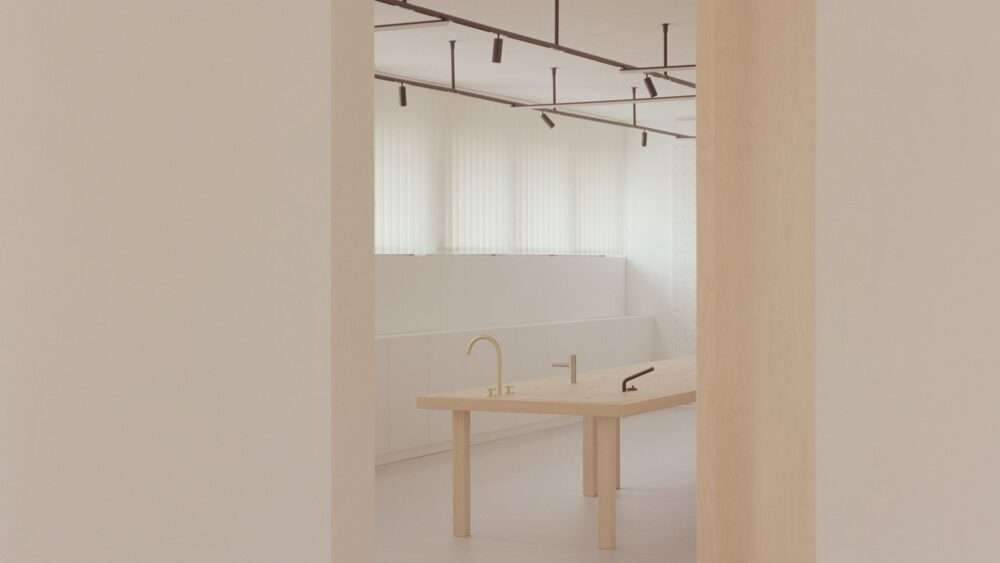Pirajean Lees creates Arts and Crafts-style interiors for Mayfair restaurant
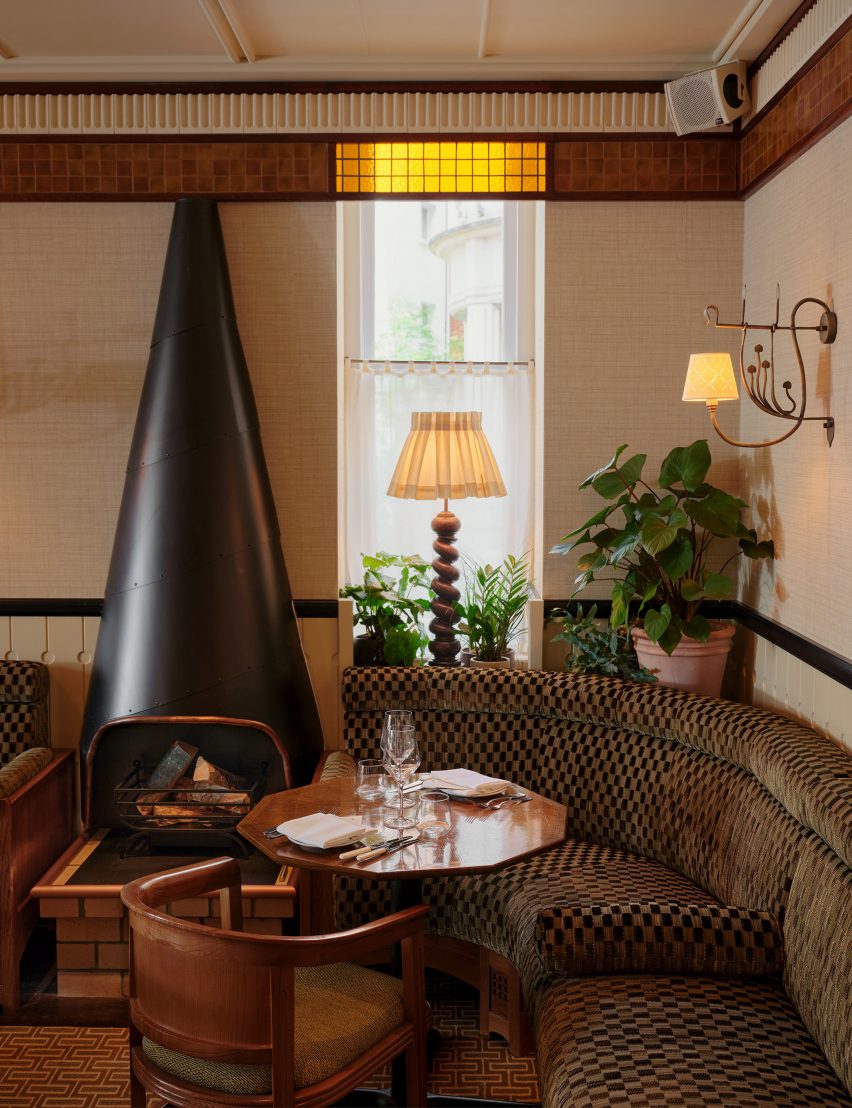
“The restaurant is in the heart of Mayfair, a place once on the cusp of the city and countryside,” Pirajean Lees told Dezeen.
“The farming history of the area and its connection to the surrounding rural lands is prevalent throughout the project and paramount to the dining experience.”
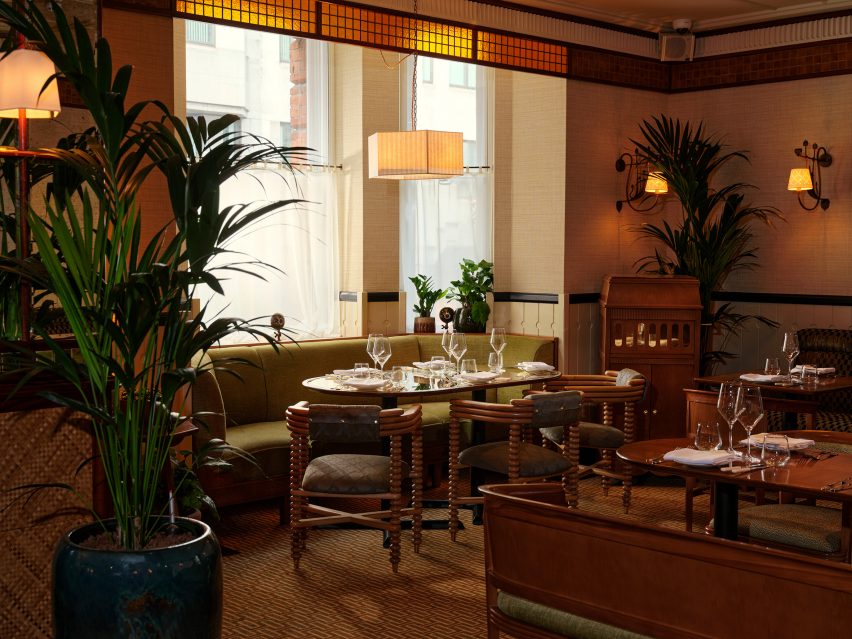
Pirajean Lees wanted to put nature and craft at the heart of this design project to align it with the ethos of Creative Restaurant Group, the restaurant’s founders.
“This led us to build on the strong connection of an imagined Mayfair Georgian manor house and its rural lands, which would have been used to grow produce,” the studio said.
“A central staircase leads to rooms usually found in a trad, national family homes. Such as a drawing room, music room, pantry, orangery, and salon. Each room has its own character whilst belonging to the one property.”
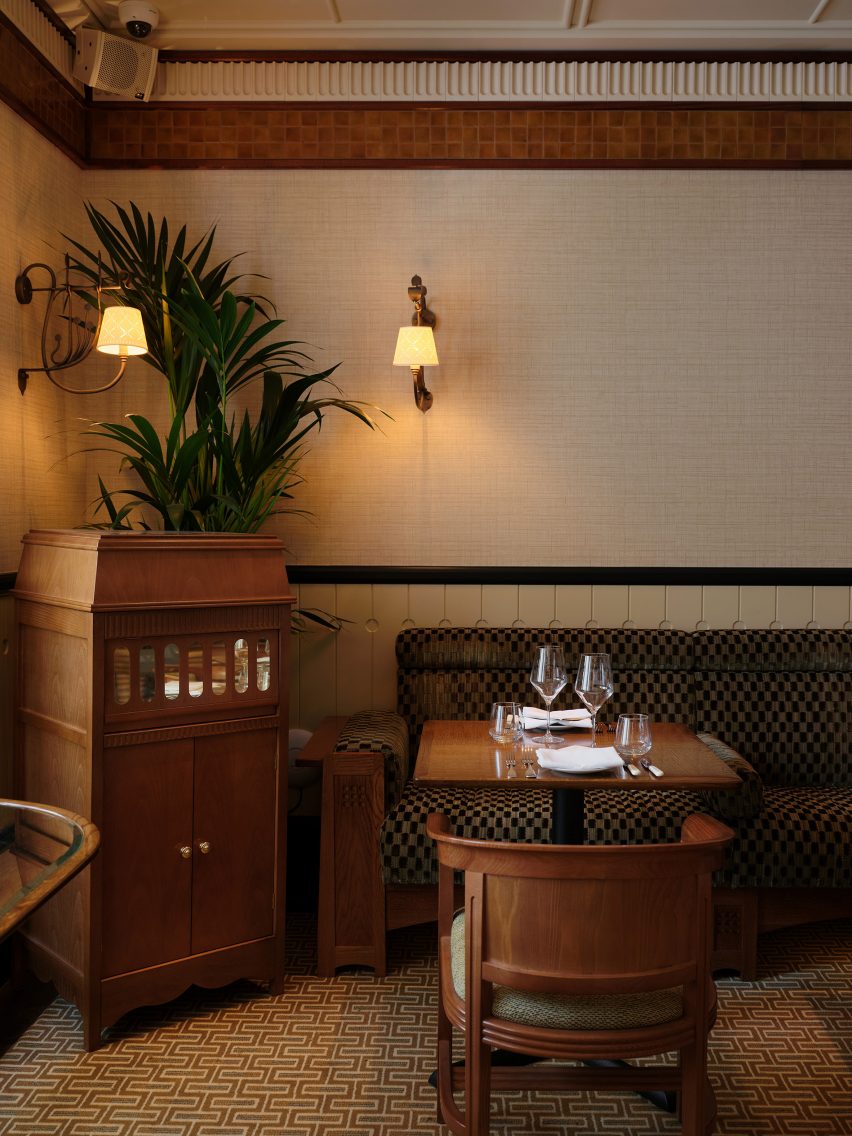
On the upper-ground floor are the richly designed reception and main dining rooms.
Moreover, The lower-ground level houses a 14-seat private room with me, its own exclusive lounge and dining area, alongside the kitchen, wine cellar, and main bar, The Nipperkin.
The design of the interiors references the arts and crafts movement of the late 19th and early 20th centuries.
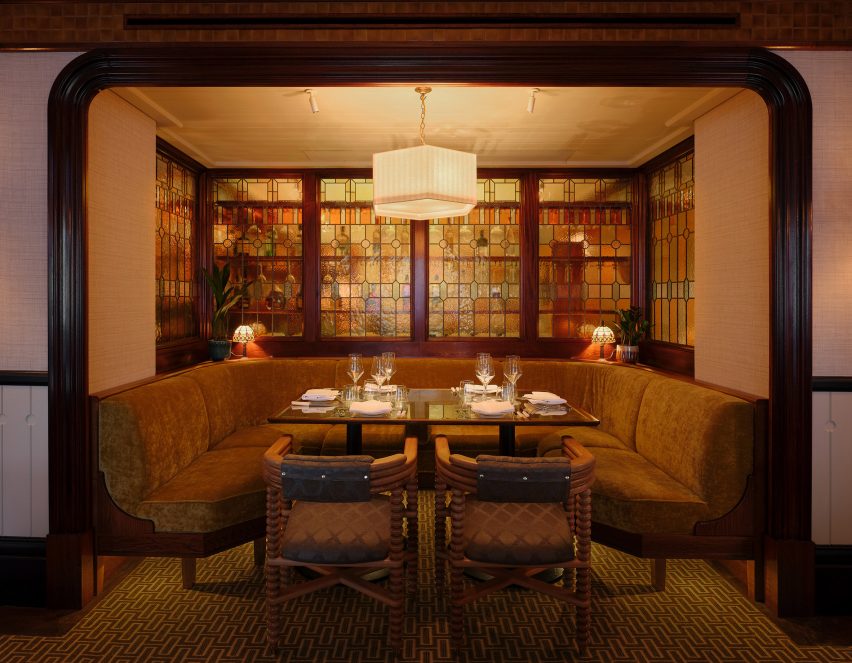
“At 20 Berkeley, we have developed a layered story of handmade details and tactile finishes that exude elegance,” said Lees.
“The project’s expression is rooted in the traditions of craftsmanship and how the process of making decorative objects and furniture should showcase the beauty of both its materials and construction.”
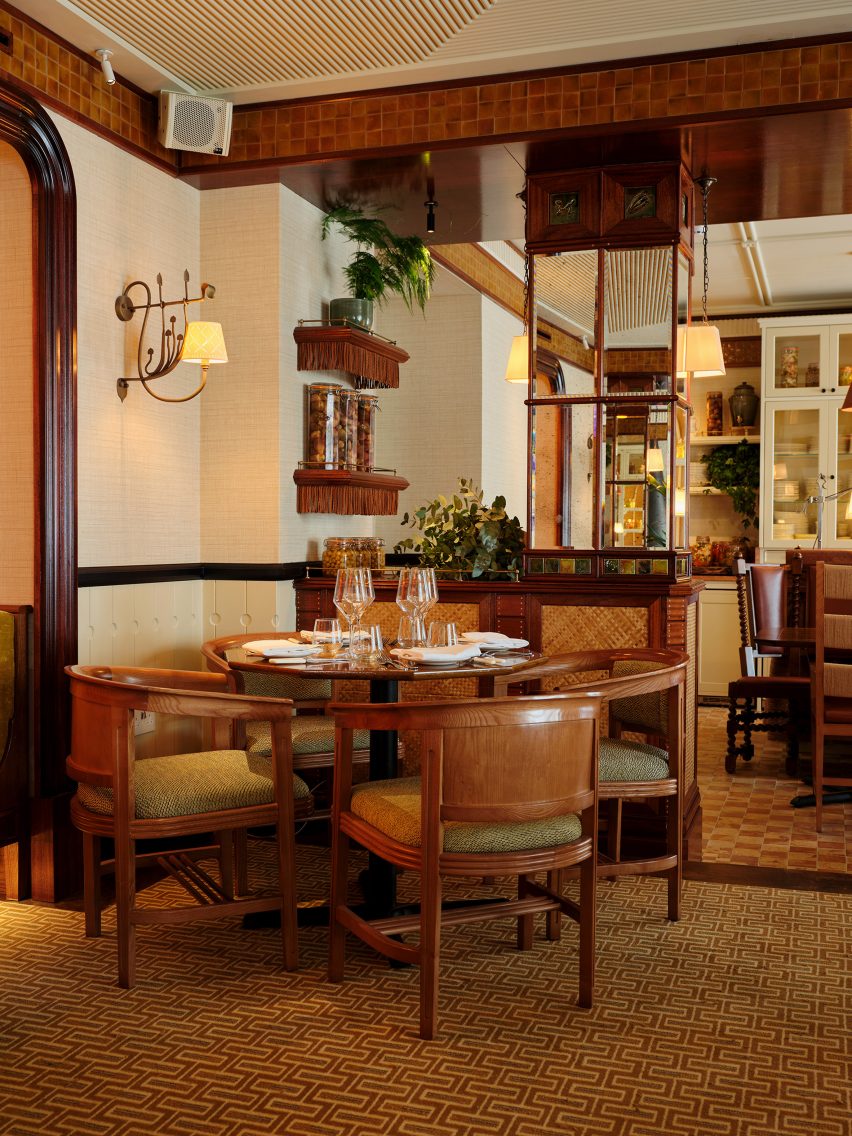
The resulting aesthetic, is detailed, with a palette of rich, warm tones including ambers, ochres, and dark reds, used across upholstery and textural wallcoverings. Floor tiles have been hand-crafted utilized and feature clay embedded with fossils.
Besppanelingy work was utilized throughout the space. Including the wall paneling, dowelled ceilings, and an English oak staircase.
The project also features bespoke elements that bring a sense of opulence to the various spaces.
Furthermore, These include a pantry, in painted timber, that provides a strong focal point of the upper floor. Here, chefs prepare dishes on the pantry island, “inviting guests to witness the chefs’ craft. As one would do in one’s home, whilst hosting guests for dinner,” said Pirajean Lees.
In the orangery, a bespoke pickling cupboard, made from sapele wood and marble, serves as “a pleasing curiosity”. Also, Used by the chefs to store jars of vegetables for their recipes.
The bespoke dining tables and chairs are of oak, while the chairs ensure maximum comfort.
“The craft elements bring depth to the project, anchoring it in its strong narrative and creating timeless interiors,” said Lees.
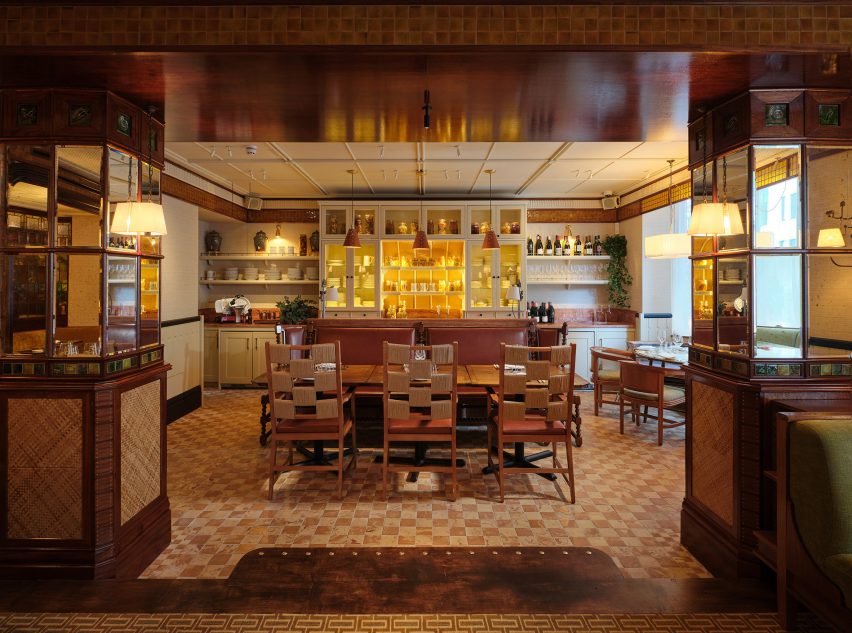
Bespoke stained glass, handcrafted in a North London studio, is another of the restaurant’s features.
However, Used in the reception and drawing room, the stained glass has been strategically positioned. Backing onto the busy central bar to give a sense of movement and energy.
In front of the windows, it warms the light coming into the rooms to create an immersive atmosphere.
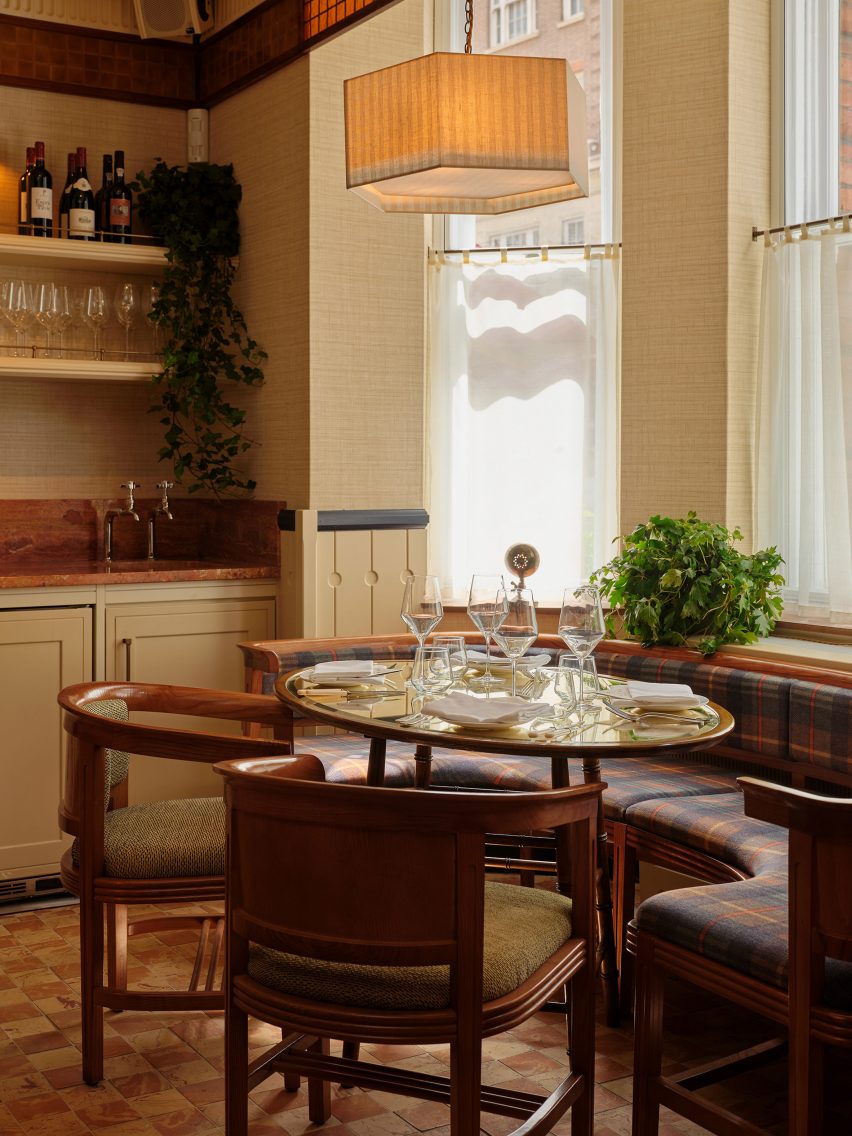
“The stained glass introduces shadows and reflections, which change throughout the day and are different in each room,” said Lees.
“As per each of our projects, the tailored finishes, joinery, and surfaces ensure optimum use of the space by the restaurateur and their guests.”
Finally, Read more on Archup:


